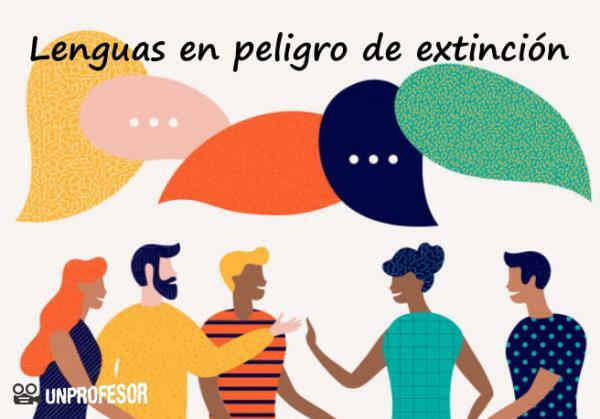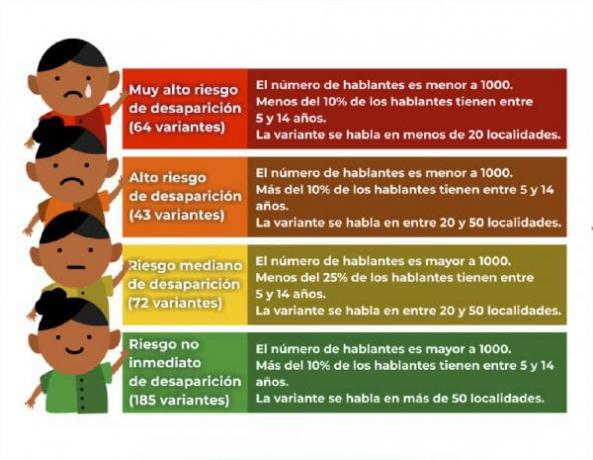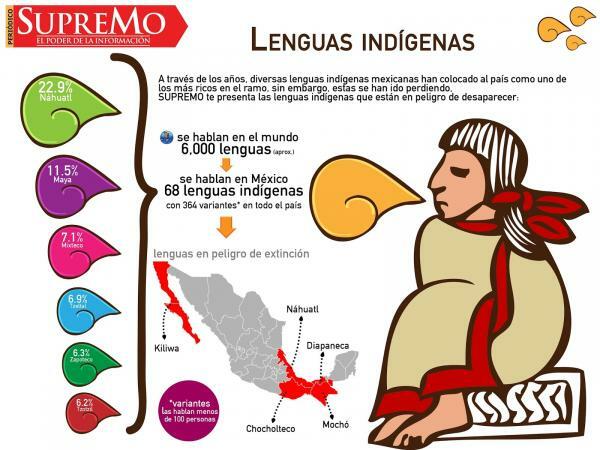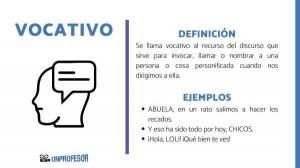What are the LANGUAGES in danger of EXTINCTION?

There is a huge variety of languages on our planet, some more majority than others that can overshadow the minority and, therefore, risk disappearing. They are the languages that are considered in danger of extinction and that can end up disappearing and thus become a dead language. In fact, it is estimated that every 2 weeks a tongue dies on our planet that has about 7,000 different languages. In this lesson from a TEACHER we are going to talk concretely about endangered languages and we will also know what they are and the causes of this situation.
There are many languages in danger of extinction that are at risk of disappearing from the linguistic landscape of our world. But why does this situation occur? Researchers have determined different causes that can lead to this extinction and the main ones are the following:
- For wars and invasions: it is one of the main causes of the disappearance of languages. In fact, at the beginning of the 20th, with the world wars, ethnic groups such as the Herero and 50% of the Namaque ethnic group in Nambia were suppressed. When invading a new territory, the invaders usually impose their language and customs, causing the original people to lose their richness and linguistic variety. A clear example of this was what happened with the pre-Columbian cultures, civilizations that had their own languages and that were annulled by the conquest of the Spanish, the British and the Portuguese.
- Isolation from civilization: Another cause of endangered languages is that these languages are spoken only in very isolated and remote tribes or civilizations. This has the consequence that there are fewer and fewer speakers of these languages and that, with the passing of the generations, they stop being spoken and, therefore, it becomes a dead language.
- Linguistic prestige: This is a well-studied concept in sociolinguistics. Many languages are at risk of extinction because they coexist with another language that has a greater cultural and social prestige. In the Iberian Peninsula this happened when Latin was introduced, it was the cultured language and the Romance languages that were emerging was popular and ill-considered speech. Over time, Alfonso X It gave Castilian the necessary cultural prestige to begin to be used officially.
- Coexistence with majority languages: Another problem that the world's languages face is that there are some languages that are majority, that is, that are spoken by a larger group of people, that has a greater prestige, a greater literary corpus, etc. This means that if this language coexists with another minority, often the speakers end up speaking the majority and, little by little, it is abandoned.

Image: Atlas Lenguas
To better understand the endangered languages that exist today, it is important to know how they are classified. And it is that depending on the degree in which they are, languages may be in greater or lesser danger of disappearing. Here we offer you the classification promoted by UNESCO and that classifies languages in these grades:
Vulnerable languages
They are the languages that are only spoken by older people in a community. The youngest may use them in the family environment but in their day-to-day use another more prestigious or majority language. An example of this situation today is the sicilian, a language that is spoken on this island of Italy and that coexists with Italian as the strongest language. Sicilian is not taught in schools and is currently relegated to a merely familiar plane.
Endangered languages
They are the languages that are spoken by the oldest people in a community but are not taught to the youngest. That is to say, not even in the inner core of the home this language is taught and, failing that, the parents use a more widely used or more majority language. This is what happens in the case of Chilean language of the Mapuches, a language that is in danger since parents speak in Spanish with their children.
Seriously in danger
Another category of endangered languages proposed by UNESCO is those that are "seriously endangered". To assess this degree, the organization is based on analyzing the use of the language in the members of different generations. Therefore, those that include this category are the languages that are not spoken or learned by children but neither are they by parents; it would only be the grandparents or the elderly who continue to use the language. In France there are some good samples of these languages, such as the Breton, Gaul or Provençal.
Languages in critical situation
In this classification we find the languages that are not spoken by children, parents or grandparents. The grandparents know the language slightly but do not master it nor do they speak it too much. This is the phase deprives the extinction and disappearance of a language. And the truth is that there are currently a great variety of languages in this state: Hawaiian is an example This is because, although it is the official language of the country, it is being replaced by Hawaiian Pidgin, a mixture of Hawaiian and English.

Image: Millennium
But what are the endangered languages today? The truth is they are MANY and listing them all is an impossible task to carry out. We have to take into account that, according to research, there are about 20 languages on our planet that are only spoken by 1 person and, therefore, as soon as that person dies, the language will disappear with he.
In addition, there are also surprising cases as is the case of the Hebrew language, a language that was no longer spoken in the 4th century and was therefore considered a dead language until it became the official language of Israel in the 19th century. Therefore, as we see, the detailed situation of the endangered languages is difficult to say for sure.
However, there are some cases that are very clear and that are widely studied by linguists. Here we discover you some of them:
- Latin: It is a dead language that is not used in any country, however, religious continue to use Latin as the official language in their speeches and communications
- Languages of Russia: in Russia there are many minority languages that are spoken in specific regions. However, the hegemony of Russian has caused many of these to be abandoned and replaced by the language of the state; This is the case of languages such as Orok, Udeje, Itelmeno, Kerek, etc.
- Languages of China: Something similar happens in this country as in Russia. There are many languages that are spoken regionally and that, little by little, are being abandoned to be replaced by Chinese. This is the case of Anung or She, two languages that run the risk of disappearing.
- Languages of Europe: on the European continent there are also languages in danger of extinction. Some examples of them are Livonian (spoken in a region of Latvia), Kashubian (in a region of Poland), Sorbian (language spoken in Germany) or the aforementioned Breton or Provencal.
- Indigenous languages of Latin America: Quechua is one of the languages that, to this day, are still spoken in some areas of Peru. However, its use is less and less and is replaced by Spanish. And this happens with many other indigenous languages of pre-Columbian communities and that, little by little, may end up disappearing.
- Manx: It is a Celtic language that was only spoken on the Isle of Man and which became extinct in 1976. However, it is now experiencing a resurgence among part of the population.




